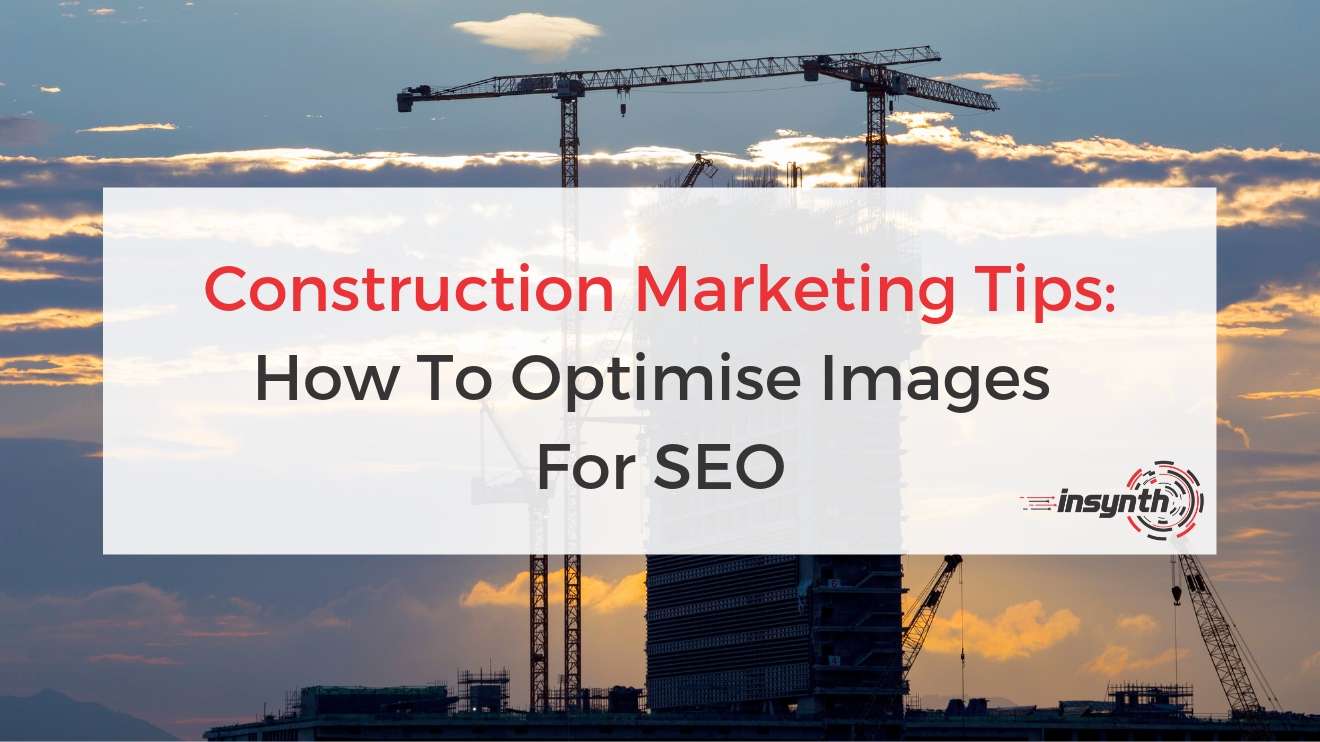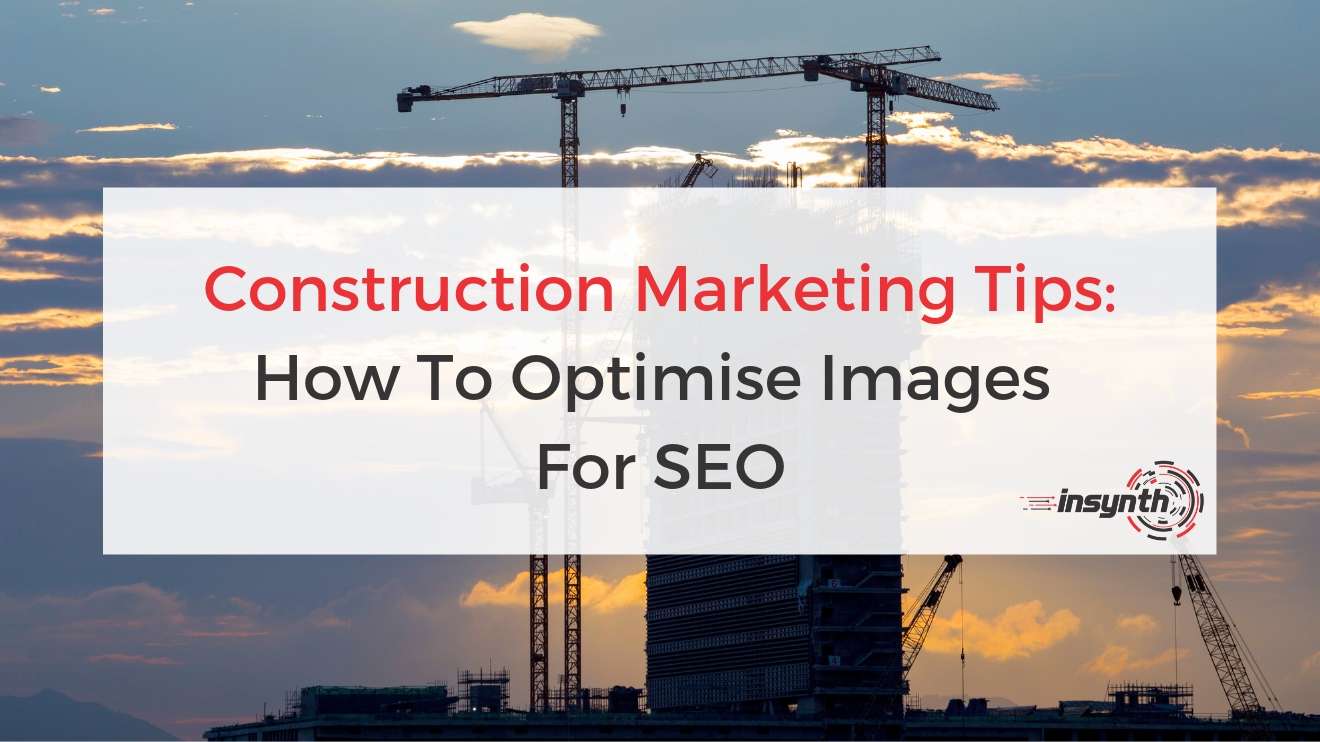4 min read
Construction Marketing Tips: How To Optimise Images For SEO
![]() Olivia Atkinson
:
21-Mar-2019 12:02:13
Olivia Atkinson
:
21-Mar-2019 12:02:13


Google doesn’t read images, search engines only read text, so if your image is named ‘DSC_006’ then it’ll never be found.
You might not think that the name of your image matters, but a third of all searches performed on Google are for images.
That’s a third of the traffic you’re missing out on just because your image isn’t named correctly for Google to find it.
Read on to find out more…
Finding The Right Image
As the saying goes ‘a picture says a thousand words’ so it’s important you pick the right one. Images should be used to support your message and compliment the relevant text.
There are many free image websites that provide high-quality images, but if you can use original images then do. With an original image, you have the opportunity to represent your company as being the best by adding personality.
It also allows you to be consistent with your branding by editing the image to have your logo on.
As good as stock images look, usually people know it’s a stock image so don’t appreciate or register it properly.
If you have a ‘Meet the Team’ page or even live chat, then you need original images that are actually of your team. People like people, so when someone can relate or be associated with you they are more likely to get in touch.

This pictures not fooling anyone is it? They’re all far too happy, smiling at a blank screen, everything’s perfectly placed and staged for the ‘perfect shot’.
It’s not a photography competition, people want to see your company for what they are, trustworthy and welcoming so people feel comfortable picking up the phone and having a chat.
Image File Format
To keep things simple we’re going to stick to just 2 different types of images, JPEG/JPGs and PNGs.
JPEG’s take up little storage space and are quick to upload and download, they’re also the best choice when posting on social media channels.
Most cameras and smartphones automatically save your pictures as JPEG’s so its normally the format people are most familiar with.
JPEG should be the default file format for uploading pictures to the web, unless they have text in them, are animated or they need transparency.
If your image needed transparency you would use PNG as the file format. This works when your logo, for example, is white or has white in it.
JPEG’s automatically put a white background behind objects so your logo would get lost, whereas PNG’s are transparent (unless a white background has manually been put on whilst editing).
So which ones best for your website?
JPEG’s are the go-to when it comes to images on the web, PNG’s are mainly used with very detailed graphics as they don’t lose any data when compressed.
Although JPEGs do lose data when compressed, this isn’t something to worry too much about as you would only notice if the quality of the photo was very low or if it had been resized incorrectly.
Resizing Your Image
Have you ever gone onto a website and it’s taken too long to load? Chances are the image files are too big so they slow down the whole functionality of the website, resulting in a quick exit and a high bounce rate.
Nearly 50% of people won’t even wait 3 seconds for a website to load.
Resizing your image will not only increase page speed but also account for people viewing on their mobile and tablet devices.
If you have a marketing team member that looks after your images and design work then they will likely have access to Photoshop, if not there are a few free online platforms below.
Change The Filename
How many of your images have got consecutive numbering from when they were uploaded originally from the camera? Or you think roof_tiles_1, roof_tiles_2 is a good way of naming images?
If guilty of both then fear not as I’m going to tell you how to correctly name your images. This is something that should be done and continuously done when any new images are added to your bank.
To start with you should be using hyphens instead of underscores to separate your words.
Next, try and stick to 3-8 words but be as descriptive as possible. When naming your image, think how many people you’ll be up against with your description. The more specific, the less competition.
Let’s stick with roof tiles, below are some examples of descriptions.
- roof_tiles_1
- red-roof-tiles
- terracotta-red-roof-tiles
- ceramic-terracotta-red-roof-tiles
- ceramic-terracotta-red-roof-tiles-Leicester
It’s more descriptive and sounds better, doesn’t it? The more specific you can be the better chance you have at ranking high, red-roof-tiles will have more searches than terracotta-red-roof-tiles and so on.
You can even add on location if that’s key to your business, whatever is specific to your product or service, mention it.
Image Alt Text
As well as naming your actual image before uploading, when you’ve uploaded your image it’s a good idea to add an alt text description.
‘Alt text’ is ‘alternative text’ that highlights the identity of an image when you hover over it with your mouse cursor.
It’s also used by screen readers that help the visually impaired navigate the web.
Alt text is basically another opportunity for you to tell Google exactly what the picture is so it gets found in searches. This will also help your website rank higher by using associating keywords to your content.
Although it’s very similar to naming your image file, you can adapt the alt text to the specific content you are using it with, it may differ each time you use the same image.
Conclusion
There are many other factors that contribute to optimising images for SEO however we think the ones above are the easiest to implement and most effective.
You should view your images as an opportunity to increase your rankings, and improve your reach.
If you need help or want advice on how to improve the ranking on your website then get in touch today. Our digital content experts not only create key rich content but also optimise and improve every part of your website including images.
About Insynth
As the only HubSpot certified agency to major on construction marketing, we bring together construction marketing strategy, digital strategy, website design, SEO, content marketing, email marketing, sales automation, marketing automation and HubSpot CRM implementation to produce successful campaigns and great results for our clients.

